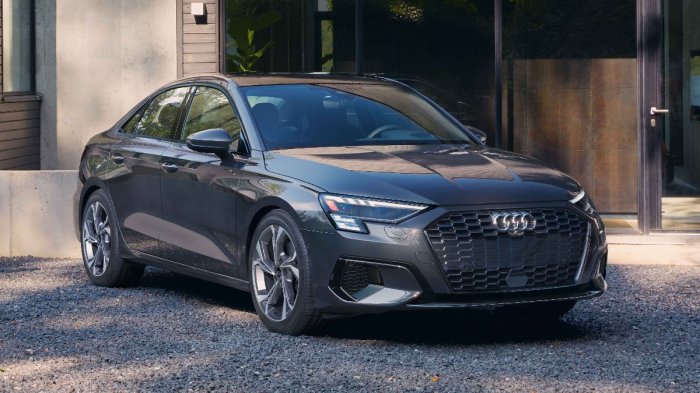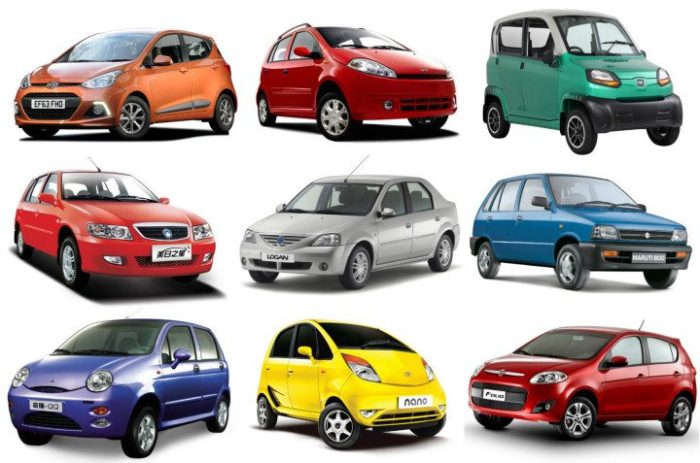New Car Minimum Price A Comprehensive Guide
Defining “New Car Minimum Price”
New car minimum price – The minimum price of a new car, the lowest price a manufacturer will sell a vehicle for, is a complex figure influenced by a multitude of factors. Understanding these factors provides insight into the automotive market’s dynamics and consumer choices.
Factors Influencing Minimum Car Prices
Several key elements determine the minimum price of a new car. These vary significantly across vehicle segments, reflecting differences in manufacturing costs, technology, and target markets.
- Vehicle Segment: Compact cars typically have lower minimum prices than luxury SUVs due to differences in size, features, and materials.
- Manufacturing Costs: Production expenses, including labor, materials, and factory overhead, directly impact the base price.
- Technology and Features: Basic safety features are often standard, but advanced driver-assistance systems (ADAS) and infotainment packages can significantly increase the starting price.
- Market Demand and Competition: High demand and limited competition can allow manufacturers to set higher minimum prices, while increased competition usually leads to lower prices.
Geographical Variations in Minimum Prices
The minimum price of a new car varies considerably depending on location. This variation is influenced by factors such as import duties, local taxes, currency exchange rates, and market-specific demand.
- Import Duties and Taxes: Countries with high import tariffs on vehicles will naturally have higher minimum prices than countries with lower or no tariffs.
- Currency Fluctuations: Changes in exchange rates can affect the price of imported vehicles, impacting the minimum price in local currency.
- Local Market Conditions: Demand, competition, and government regulations all play a role in shaping minimum prices within a specific geographic region.
Examples of Least Expensive New Cars
The least expensive new cars vary considerably by country. While precise models and prices fluctuate, some examples might include budget-friendly hatchbacks or sedans offered by manufacturers targeting cost-conscious consumers.
| Manufacturer | Model | Country | Price (USD, approximate) |
|---|---|---|---|
| Dacia (Renault Group) | Sandero | Romania | 8000 |
| Maruti Suzuki | Alto | India | 5000 |
| Chevrolet | Spark | Mexico | 10000 |
| Kia | Picanto | South Korea | 12000 |
Impact of Features on Minimum Price: New Car Minimum Price
The features included in a base model significantly influence its starting price. Manufacturers carefully select features to balance affordability and consumer appeal.
Basic Features and Starting Price
Basic features such as air conditioning, power steering, and basic audio systems are often standard in entry-level vehicles. However, even minor upgrades can affect the minimum price.
Determining a new car’s minimum price is complex, varying greatly based on brand, features, and market conditions. For example, understanding the price point for a luxury electric vehicle significantly impacts this overall minimum. To explore a specific example within this segment, check out the pricing details for a new Audi electric car at new audi electric car price.
Ultimately, factors like the Audi’s price help shape the broader minimum price landscape for new vehicles.
Safety Features and Minimum Cost
Safety features are increasingly important to consumers. While basic safety features like airbags and anti-lock brakes are typically standard, advanced safety technologies, like lane departure warning or adaptive cruise control, often increase the starting price.
Key Features Driving Up Minimum Price
Features that tend to increase the minimum price point include advanced driver-assistance systems (ADAS), larger infotainment screens with navigation, premium audio systems, leather upholstery, and sunroof.
Comparing Minimum Prices with Different Equipment Levels
A direct comparison reveals the price difference between vehicles with varying levels of standard equipment. A base model with minimal features will always be cheaper than a model with a more extensive list of standard features.
| Model | Standard Features | Price (USD, approximate) |
|---|---|---|
| Model A (Base) | Air conditioning, power steering, basic audio | 15000 |
| Model A (Mid-range) | Adds alloy wheels, keyless entry, rearview camera | 17000 |
| Model A (Premium) | Includes ADAS, leather seats, sunroof | 22000 |
Economic Factors Affecting Minimum Prices
Several macroeconomic factors significantly influence the minimum price of new cars. These factors create an interconnected web of influences on manufacturing and pricing decisions.
Currency Fluctuations and Minimum Prices
Changes in currency exchange rates directly impact the cost of imported vehicles. A stronger domestic currency makes imports cheaper, potentially lowering minimum prices, while a weaker currency increases costs and minimum prices.
Manufacturing Costs and Raw Material Prices

Source: motorbiscuit.com
Fluctuations in the prices of raw materials like steel, aluminum, and plastics directly affect manufacturing costs, influencing the minimum price of vehicles. Increased raw material prices lead to higher minimum prices.
Government Regulations and Taxes
Government regulations, including emission standards and safety requirements, increase manufacturing costs and thus the minimum price. Taxes and tariffs imposed by governments further impact the final price consumers pay.
Economic Factor Influence on Hypothetical Sedan
| Factor | Effect on Price | Example | Explanation |
|---|---|---|---|
| Increased Steel Prices | Price Increase | 10% rise in steel costs | Higher raw material costs directly increase manufacturing expenses. |
| New Emission Standards | Price Increase | Implementation of stricter emission regulations | Meeting new standards requires costly modifications. |
| Stronger Domestic Currency | Price Decrease | 15% appreciation of the domestic currency | Imported components become cheaper, reducing overall costs. |
| Government Subsidies | Price Decrease | Government incentives for electric vehicles | Subsidies reduce manufacturing costs and final price. |
Manufacturer Strategies and Minimum Prices
Manufacturers employ various pricing strategies to compete effectively in the entry-level market. These strategies aim to balance profitability with market share.
Pricing Strategies in the Entry-Level Market
Manufacturers use strategies like value engineering (reducing costs without compromising essential features), cost-effective sourcing of components, and strategic partnerships to offer competitive minimum prices.
Marketing Approaches to Justify Minimum Prices
Marketing emphasizes value for money, highlighting essential features and competitive pricing. Manufacturers often focus on fuel efficiency, reliability, and basic practicality to attract budget-conscious buyers.
Comparison of Pricing Strategies
Different manufacturers use diverse pricing strategies. Some focus on aggressively low minimum prices, while others prioritize higher-quality materials and features, resulting in a slightly higher minimum price but potentially better perceived value.
Methods for Controlling Minimum Prices
- Efficient manufacturing processes
- Negotiating favorable deals with suppliers
- Careful selection of materials and components
- Optimizing vehicle design for cost-effectiveness
- Strategic pricing and promotions
Consumer Perception and Minimum Prices
Consumer perceptions play a crucial role in the success of minimum-priced vehicles. Factors like brand reputation and consumer reviews significantly influence purchasing decisions.
Consumer Expectations and Perceived Value, New car minimum price
Consumers often have specific expectations regarding features and quality at a given price point. Meeting or exceeding these expectations is crucial for a minimum-priced vehicle to be perceived as offering good value.
Impact of Brand Reputation

Source: guiamotor.org
A strong brand reputation can significantly influence consumer perception. Even if a minimum-priced vehicle from a well-established brand has fewer features, consumers might perceive it as more reliable and trustworthy than a similar vehicle from an unknown brand.
Influence of Consumer Reviews and Ratings
Online reviews and ratings greatly influence consumer decisions. Positive reviews can boost sales, even for minimum-priced vehicles, while negative reviews can significantly deter potential buyers.
Consumer Decision-Making Process
A typical consumer considering a minimum-priced car might prioritize essential features like reliability, fuel efficiency, and safety. They might also weigh the vehicle’s overall value proposition against the price, carefully considering reviews and comparing options from different manufacturers before making a final decision. Brand reputation also plays a significant role, with established brands often preferred over lesser-known brands, even if the features and price are comparable.
Future Trends and Minimum Prices
Predicting future minimum car prices requires considering technological advancements, evolving consumer preferences, and economic factors. Several trends suggest potential changes in the next five years and beyond.
Anticipated Changes in Minimum Prices (Next 5 Years)
Several factors will likely influence minimum prices over the next five years. Increased automation in manufacturing could lower costs, potentially reducing minimum prices. However, rising raw material costs and the increasing adoption of electric vehicle technology could push prices upward. The overall effect will likely depend on the interplay of these opposing forces.
Impact of Technological Advancements
Technological advancements like increased automation in manufacturing, the use of lighter materials, and improvements in battery technology for electric vehicles will all impact future minimum prices. While automation may lower costs, the adoption of new technologies may initially increase them.
Effect of Evolving Consumer Preferences
Growing consumer demand for safety features, advanced driver-assistance systems (ADAS), and electric vehicles could push minimum prices higher. However, increasing competition and the availability of more affordable electric vehicles could potentially offset this trend.
Projected Trend of Minimum Car Prices (Next Decade)
A likely scenario is a period of initial price increases due to the adoption of new technologies and stricter regulations. However, as these technologies become more mature and widespread, and manufacturing processes become more efficient, we might see a leveling off or even a slight decrease in minimum prices over the longer term. The final outcome will heavily depend on global economic conditions and geopolitical events.
Commonly Asked Questions
What is included in the base price of a new car?
The base price typically includes the vehicle’s basic features, such as the engine, transmission, and essential safety equipment. It often excludes optional features, dealer fees, taxes, and destination charges.
How often do new car minimum prices change?
Minimum prices can fluctuate due to various factors, including changes in manufacturing costs, raw material prices, currency exchange rates, and market demand. Manufacturers may adjust prices periodically throughout the year.
Are there any hidden costs associated with buying a minimum-priced car?
Yes, potential hidden costs include dealer fees, taxes, registration fees, and destination charges. It’s crucial to inquire about all additional fees before finalizing the purchase.
Where can I find reliable information on new car minimum prices?
Reliable sources include the manufacturer’s website, reputable automotive news websites, and consumer reporting agencies. Always compare prices from multiple sources.





















